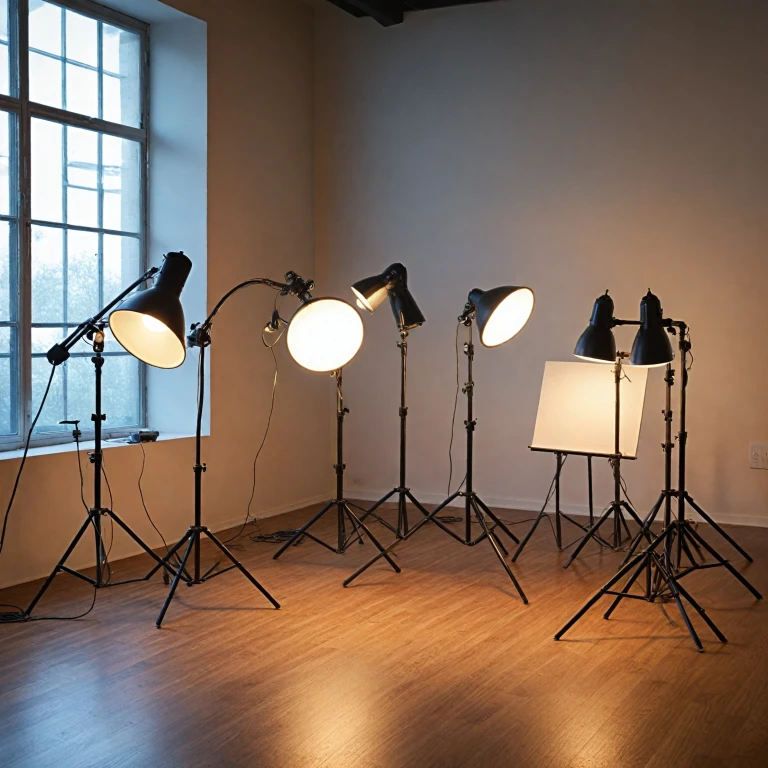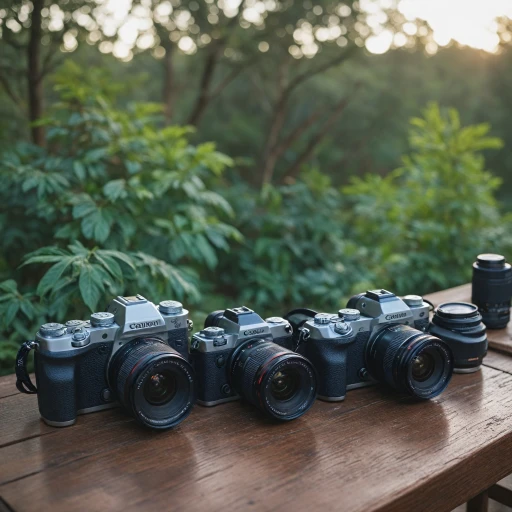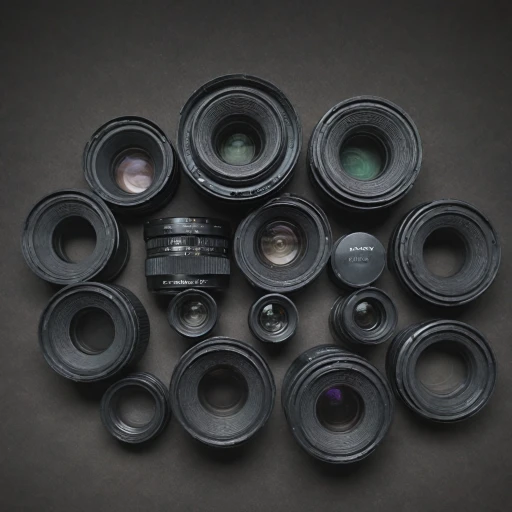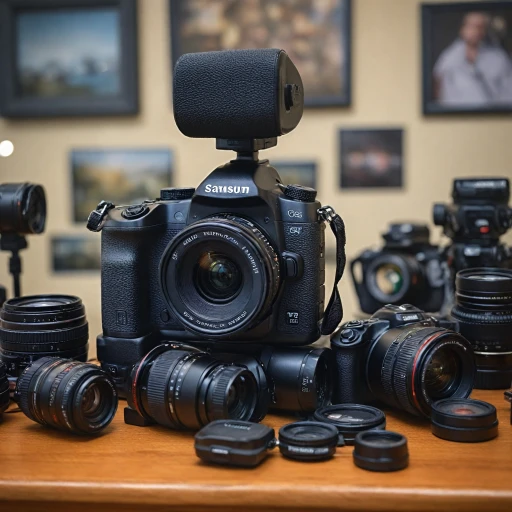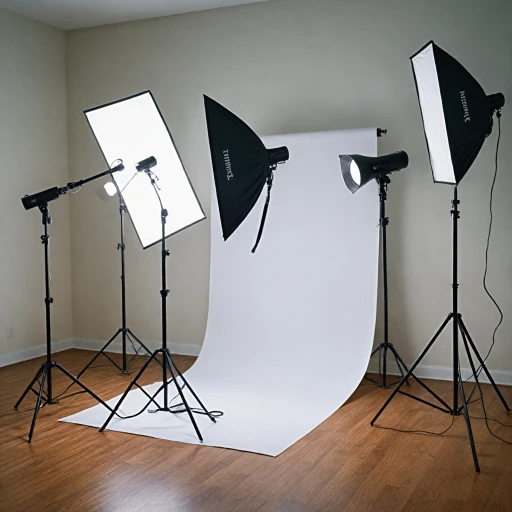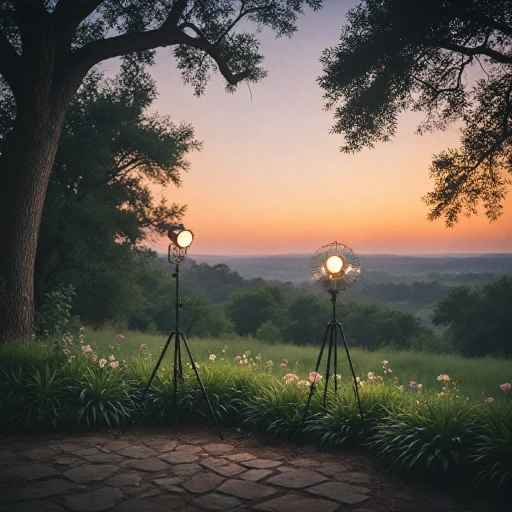The Importance of Light Stands in Photography
Why Light Stands Matter in Your Photography Setup
Light stands play an essential role in photography, providing stability and support for your lighting equipment. Their significance extends beyond mere support to influencing how light interacts with your subjects, which is crucial in achieving the desired photographic effect. Light stands come in various designs and materials, such as aluminum and stainless steel, each offering different levels of durability and price ranges. For instance, lighter materials like aluminum provide easy portability but may not offer the same level of stability as a more robust steel stand. When comparing light stands, factors such as maximum height, weight capacity (often measured in lbs), and features like air cushioned or double riser capabilities are important in determining the suitability for your specific needs. With prices ranging greatly, understanding the specs of light stands can help you invest wisely. Whether considering the original price, current price, or sale price, aligning your budget with your lighting needs is vital. Additionally, view full details or price comparisons online to weigh your options wisely. Furthermore, considering a light stand with a levelling leg or air cushioned features can dramatically enhance your photo quality by ensuring consistent lighting effects, reducing the risk of light stands tipping over. For more comprehensive insights on how light stands can enhance your lighting setup, explore more about enhancing your DJ setup with the right lighting equipment here.Types of Light Stands and Their Uses
Exploring the Variety of Light Stands Available
Understanding the types of light stands and their specific uses can greatly impact your photography sessions. Each stand offers different features in terms of height, weight capacity, and material composition, affecting both functionality and cost.- Aluminum Stands: A popular choice due to their affordability and lightweight design, making them easy to transport. They are generally less expensive than their steel counterparts, but can still offer a stable base for most lights.
- Steel Stands: These are geared towards heavy-duty applications. With their robust build, they cater to scenarios requiring utmost stability, like outdoor shoots with powerful lights. Consequently, their price is often higher due to the superior material.
- Air Cushioned Stands: Designed to prevent sudden drops, air cushioned stands are ideal for photographers who frequently adjust their lighting setup. This feature adds to the regular price, but enhances equipment safety.
- Double Riser and Maximum Extension: Light stands offering double riser functionality allow for additional height, often reaching over 10 feet. This is crucial when aiming for overhead lighting without compromising on stability.
- Cushioned Details and Black Finish: Some stands come with cushioned grips for comfortable adjustments and a sleek black finish that minimizes light reflections during a shoot.
- Levelling Leg: Perfect for uneven ground, this feature ensures stability regardless of the surface. Particularly useful in outdoor landscapes where terrain can be unpredictable.
Choosing the Right Light Stand for Your Needs
Finding the Perfect Fit: Selecting a Light Stand
When it comes to choosing the right light stand for your digital photography needs, understanding the details of each type is crucial. The market offers a variety of stands made from different materials such as aluminum and stainless steel, each with its unique benefits and price points.
- Weight and Material: If portability is a priority, an aluminum light stand might be your best bet. Typically weighing less in lbs, these models are easier to transport. For those looking for stability and durability, stainless steel light stands are heavier but reliable, especially in studio settings.
- Height and Extension: Depending on your needs, you might opt for a light stand with a higher maximum height or one with multiple extension features. Some light stands can reach impressive heights while remaining stable, thanks to their double riser design. It's important to compare the maximum height specifications to ensure they fit your requirements.
- Weight Capacity: It's crucial to consider the stand's weight lbs capacity, especially if you're using heavier studio equipment. Light stands with a heavy-duty build can support more substantial setups, ensuring your gear remains secure during shooting.
- Special Features: Some stands come with air-cushioned features to prevent sudden drops, which can be particularly handy when adjusting lights quickly. Additionally, consider models with a levelling leg for stability on uneven surfaces.
When evaluating options, take note of both the original price and any current price sales. This approach helps in assessing the unit price value in relation to the stand's features and material quality. For a comprehensive, semantically connected solution for light stands, you may find more insights in view full recommendations of accessories that enhance setup efficiency. Understanding these factors will guide not only your purchase decision but also your setup dynamics, ensuring that your light stands support your creative vision in every project.
Setting Up Your Light Stand for Optimal Lighting
Setting Up for the Best Illumination
When getting ready to use your light stand, it's crucial to consider a few factors to achieve optimal lighting. The height of the stand is often adjustable, allowing you to experiment with angles and light positioning. The details original to each stand, like the weight lbs or the maximum height, play a key role in its setup. Start by examining the build of the stand. Whether it's an aluminum or stainless steel structure, ensure it's stable in your workspace. For heavier lights, opt for heavy duty stands with a sturdy base. A double riser or an air cushioned leg system can aid in smooth adjustments, enabling a more secure grip on the lights. Next, consider using a light stand with air cushioned features. This ensures safety for your lights and equipment by preventing sudden drops. A stand with a levelling leg provides a more stable setup on uneven surfaces. In the context of different shoots, adjusting the height and angle of the stand caters to various needs—adjusting those first can save time during the actual shoot. When you compare models, don't overlook the benefits of buying according to your unique requirements. The current price and price sold will vary, but investing in a stand that meets your needs is vital. Assess whether you need additional extensions or a max height that fits more diverse shooting scenarios. Remember, regular updates and maintenance will prolong the life of your light stand, as noted previously. Consider the units' specs, like cushioned legs and the max extension, as part of your purchasing considerations. By carefully setting up your light stand with these aspects in mind, you'll ensure that your lighting is not only effective but enhances the overall quality of your photographs.Maintaining and Storing Light Stands
Extending the Life of Your Light Stands
Proper care and maintenance of light stands are essential to ensure longevity and optimal performance. Here’s what you should consider:- Material Consideration: Knowing whether your stand is made from aluminum or stainless steel helps determine the care it requires. Aluminum stands may require regular cleaning to prevent oxidation, while stainless steel stands are more resistant to corrosion but can still benefit from gentle cleaning.
- Handling and Setup: Always follow the manufacturer's instructions for setting up and taking down your stands to avoid unnecessary wear and tear. Heavy-duty double riser stands can withstand more weight, but improper use can still lead to damage.
- Storage Practices: Store your stands in a dry and stable environment to prevent any moisture-induced damage. Using a carry bag or stand cases can also protect them from dust and scratches.
- Routine Checkups: Periodically check for loose components, especially if the stand is air-cushioned. This will prevent any potential accidents during shoots.
Common Mistakes to Avoid with Light Stands
Missteps to Avoid When Using Your Light Stands
Navigating the landscape of light stands effectively requires attention to both detail and technique. Despite their pivotal role in photography, there are common errors that can hinder the optimal use of light stands. By being aware of these missteps, you can avoid potential challenges while ensuring your equipment remains in prime condition.- Overloading the Stand: Each stand has a maximum weight capacity, often measured in lbs, that it can safely support. Exceeding this limit—whether using a heavy-duty aluminum or stainless steel stand—can compromise stability and safety. Be sure to view the full details of your stand’s specifications to understand the weight it can bear.
- Ignoring Extension and Height Limits: Extending light stands beyond their recommended height or double riser capacity can stress the legs and joints, risking damage. Different stands offer various extension heights, and it's crucial to compare these with your lighting needs.
- Neglecting Air-Cushioned Benefits: Many light stands are air-cushioned to prevent sudden drops when adjusting height, protecting both the stand and your equipment. Utilize this feature of air-cushioned stands to prevent unexpected damages.
- Improper Setup on Uneven Surfaces: Not using a levelling leg on uneven terrain can result in instability. For outdoor photo shoots, ensure your stand is stable, and consider those with a levelling function to adapt to different surfaces.
- Lack of Regular Maintenance: Regular checks and proper maintenance can extend the life of your light stands. Ensure joints are not rusted, especially with steel variants, and check that all bolts and joints are tight to maintain the original sturdiness.
- Improper Storage: Proper storage helps avoid unnecessary wear and tear. Collapse them correctly after each use and keep them in a dry, safe location to prevent material deterioration.
